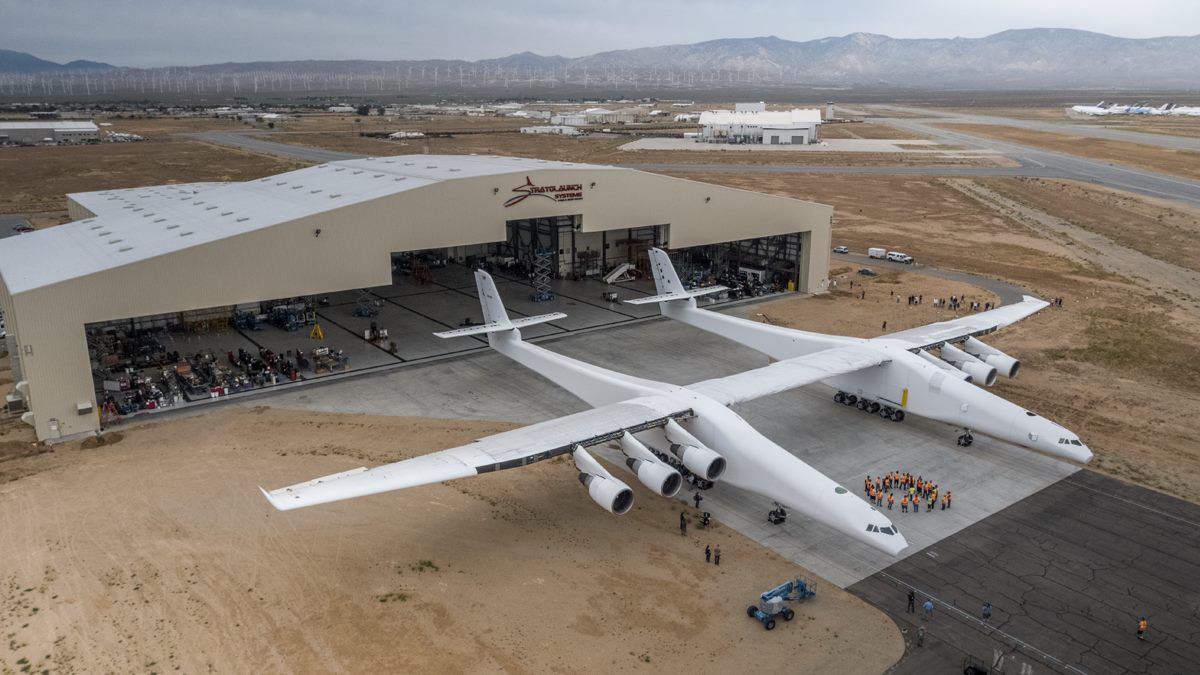The world’s largest aircraft by wingspan left its construction hangar this week in California’s Mojave Desert.
The Stratolaunch is a twin-fuselage aircraft using recycled parts from two Boeing 747-400s that has been designed to lift a rocket (or rockets) weighing up to 227 tonnes and launch it into low Earth orbit.
Microsoft co-founder Paul Allen’s company Vulcan Aerospace is behind the project, which aims to revolutionise the satellite launch industry.
The composite aircraft was nicknamed the Roc during its development, after the mythical giant bird, according to the Seattle Times. It has a wingspan of 117.4 metres (385 feet), twin fuselages 72.5 metres long and twin vertical stabilisers 15 metres high. Its maximum take-off weight of 589 tonnes is slightly less than the world’s heaviest aircraft, the Antonov An225. Its six Pratt and Whitney engines are ex-Boeing 747 units, as are its cockpit windows and flight deck (it will be flown by a three-person crew from the right fuselage; the left fuselage is unpressurised). The aircraft has a relatively short operational range of about 2000 nautical miles, sufficient however to launch up to three rockets in a single flight
The aircraft will now undergo ground testing, engine runs, and taxi tests before its first flight, Stratolaunch chief executive Jean Floyd said. ‘Over the coming weeks and months, we’ll be actively conducting ground and flight-line testing at the Mojave Air and Space Port.’
‘This is a first-of-its-kind aircraft, so we’re going to be diligent throughout testing and continue to prioritise the safety of our pilots, crew and staff,’ Floyd said.
He also confirms the Stratolaunch is on track to perform its first launch demonstration ‘as early as 2019’.
However, since the project was founded in 2011, advances in microelectronics have led to the development of so-called ‘cubesat’ and ‘nanosat’ satellites that are much smaller than previous versions and do not require large rockets to launch them.



Comments are closed.